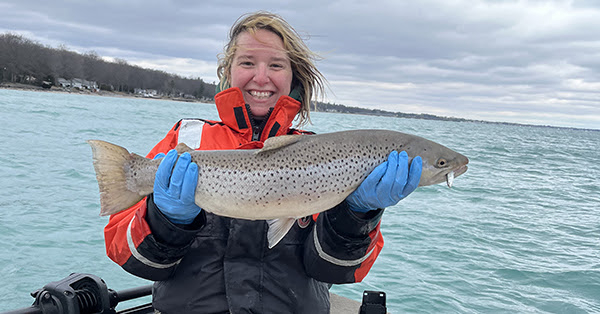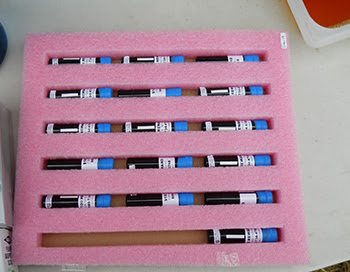Michigan DNR asks anglers to report tagged brown trout for new Rifle River study

DNR asks anglers to report tagged brown trout for new Rifle River study
The Michigan Department of Natural Resources is asking Rifle River and Saginaw Bay anglers to keep an eye out for brown trout with a tag or clip and to report information about these fish as part of a new study.
This spring, the DNR initiated a pilot study to gauge brown trout movement in the Rifle River and their exchange between the river and Saginaw Bay. Over the next two years, approximately 20 brown trout in this vicinity will be tagged with an internal acoustic telemetry tag. Acoustic tags, also called transmitters, send a series of pings to nearby receivers, which essentially act as underwater computers anchored to the lake bottom. These tags connect with the network of receivers in Saginaw Bay and the main basin to collect fish movement information.
Local anglers recently have reported an increase in catch rates of lake-run brown trout. The Rifle River is annually stocked with the Sturgeon River strain of brown trout to create a resident stream fishery, but this strain of the species can exhibit lake-run behavior, meaning that they migrate from the river to the Great Lakes. This pilot study will provide preliminary data to determine the extent to which this may be occurring and assist the DNR with future management decisions.
Along with the tags for the pilot study, brown trout stocked in the Rifle River are marked with one of four fin clips specific to stocking location: left pelvic, right pelvic, left pectoral and right pectoral. (See diagram.)
“Information collected from the telemetry study and catch reports of clipped brown trout will help DNR fisheries managers evaluate the effectiveness of current actions and adapt future decisions accordingly,” said April Simmons, DNR fisheries management biologist. “The resulting data will be a big step toward answering important questions about the exchange of these fish between the Rifle River and Saginaw Bay.”
Anyone who catches a tagged or clipped fish is asked to report the following information using the tag return form at Michigan.gov/EyesInTheField:
- Species.
- Length.
- Weight (if known).
- Capture date and location.
- Tag location (tagged or fin-clipped and where on the fish’s body).
- Identification number (if tagged).
- Full-body photo of fish (if clipped, please ensure the clip can be seen).
Some tagged fish may have a Floy tag – a long, narrow, colored, noodle-like tag – but all tagged fish will have a clipped anal fin.
If you catch and keep a tagged brown trout, please be sure to remove the internal transmitter from the fish, rinse it with water and store it at room temperature. Do not freeze the transmitter. For a $100 reward and arrangements to return the transmitter, or for questions about the study, contact April Simmons at 989-686-2295 (Monday through Friday, 9 a.m. to 5 p.m.).
Learn more about marked and tagged fish at Michigan.gov/TaggedFish.
Contact: April Simmons, 989-686-2295






